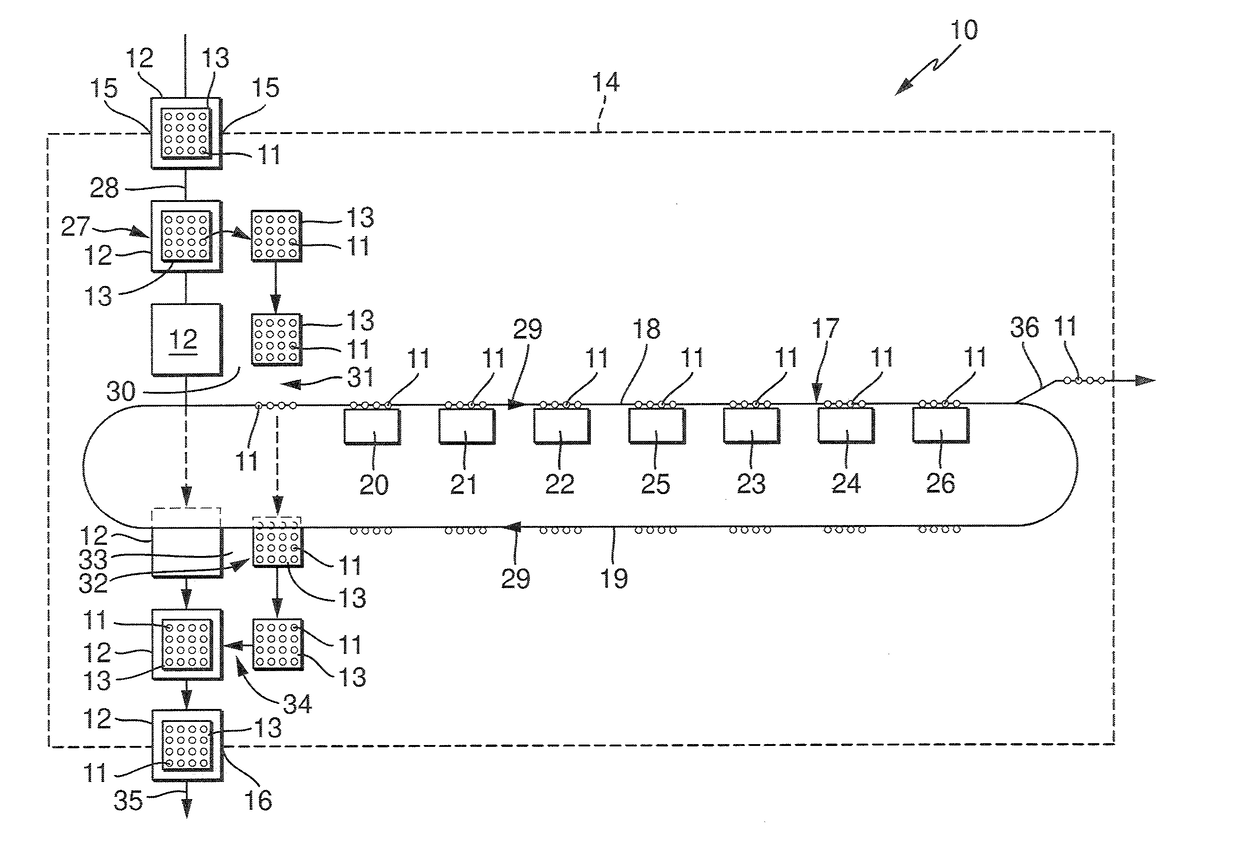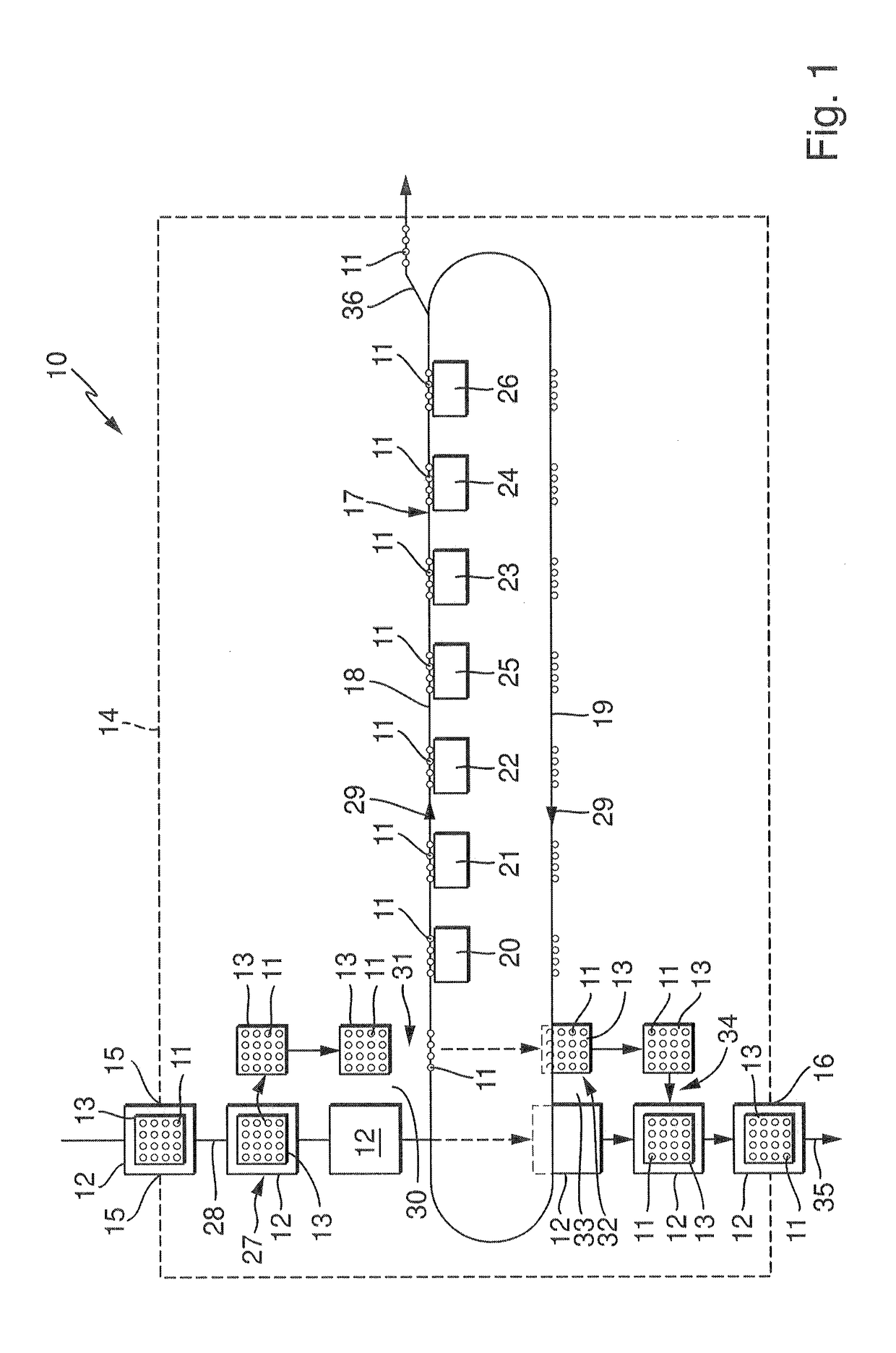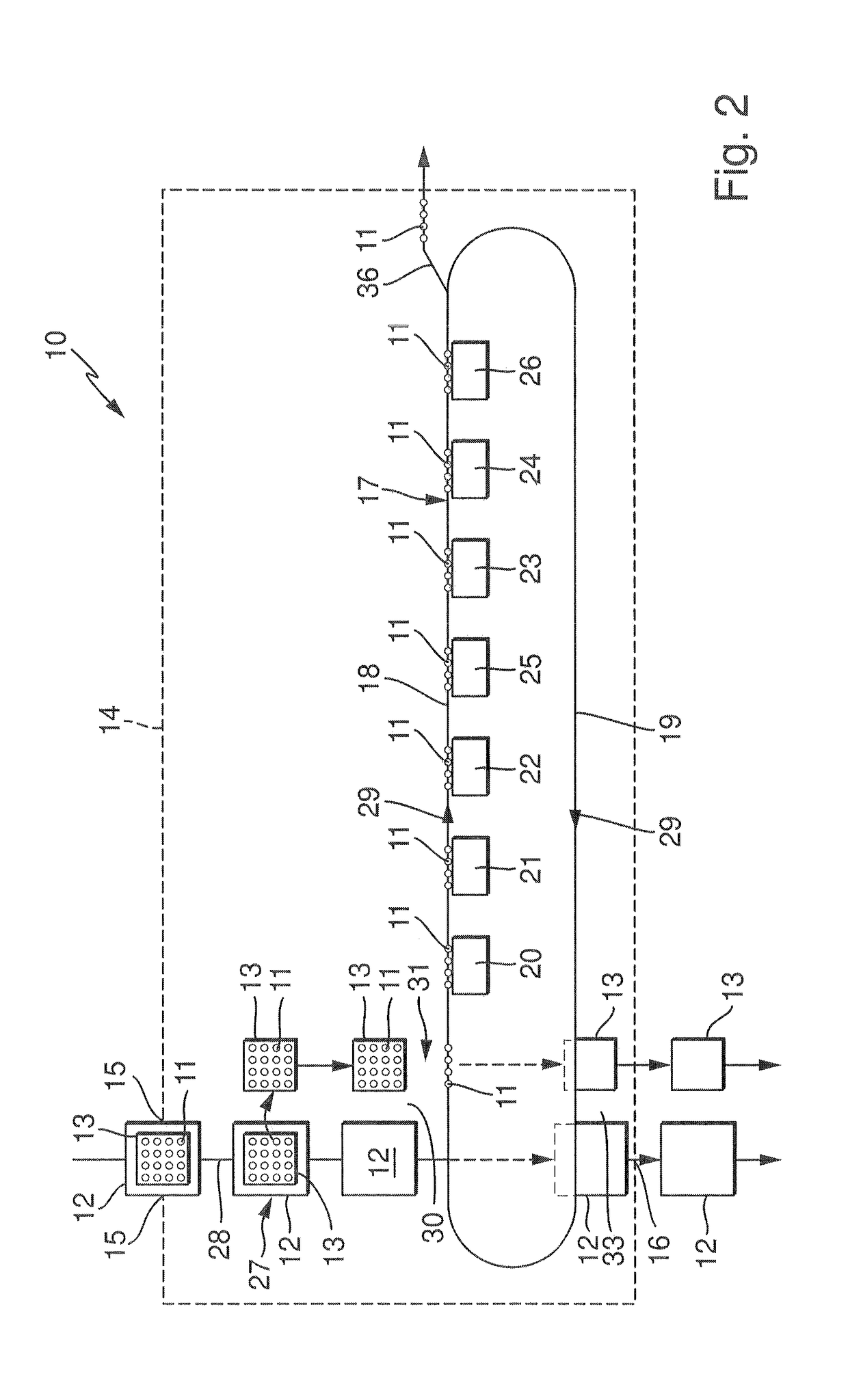Method and device for filling and closing pharmaceutical objects
a technology for filling and closing pharmaceutical objects, applied in the field of new filling and closing methods for pharmaceutical objects, can solve the problems of long processing time, product damage, and the need to repeatedly lift objects out of the nest and replace, so as to eliminate the risk of product damage or at least largely minimize the effect of output drop
- Summary
- Abstract
- Description
- Claims
- Application Information
AI Technical Summary
Benefits of technology
Problems solved by technology
Method used
Image
Examples
Embodiment Construction
[0014]The following is a detailed description of example embodiments of the invention depicted in the accompanying drawings. The example embodiments are presented in such detail as to clearly communicate the invention and are designed to make such embodiments obvious to a person of ordinary skill in the art. However, the amount of detail offered is not intended to limit the anticipated variations of embodiments; on the contrary, the intention is to cover all modifications, equivalents, and alternatives falling within the spirit and scope of the present invention, as defined by the appended claims.
[0015]The device 10 shown in FIG. 1 is designed to process pre-sterilized objects 11 in an aseptic manner, for example, to fill and close pharmaceutical objects 11, which comprise, syringes, vials, cylindrical ampules or like pharmaceutical objects, without limitation.
[0016]The objects 11 are fed by way of substantially tub-shaped receiving containers 12 (or “tubs”). The tubs 12 include at ...
PUM
 Login to View More
Login to View More Abstract
Description
Claims
Application Information
 Login to View More
Login to View More - R&D
- Intellectual Property
- Life Sciences
- Materials
- Tech Scout
- Unparalleled Data Quality
- Higher Quality Content
- 60% Fewer Hallucinations
Browse by: Latest US Patents, China's latest patents, Technical Efficacy Thesaurus, Application Domain, Technology Topic, Popular Technical Reports.
© 2025 PatSnap. All rights reserved.Legal|Privacy policy|Modern Slavery Act Transparency Statement|Sitemap|About US| Contact US: help@patsnap.com



